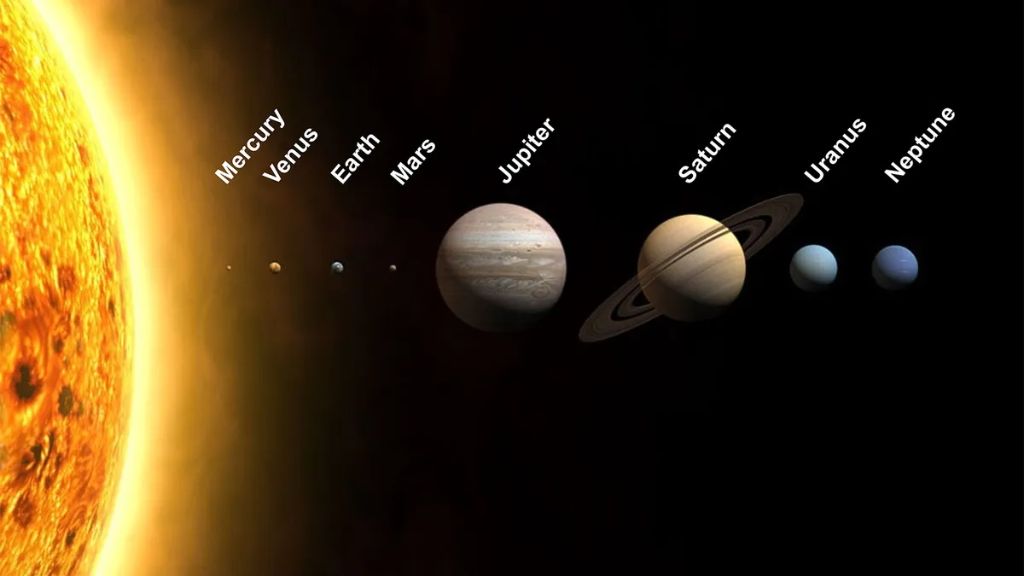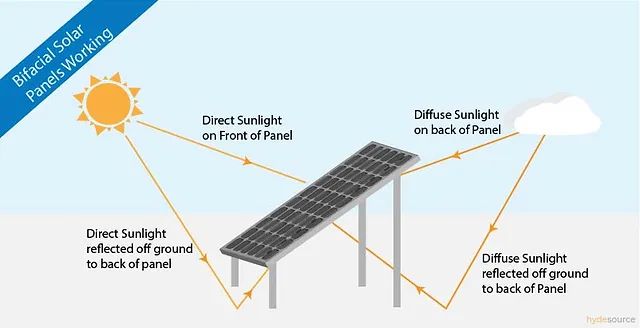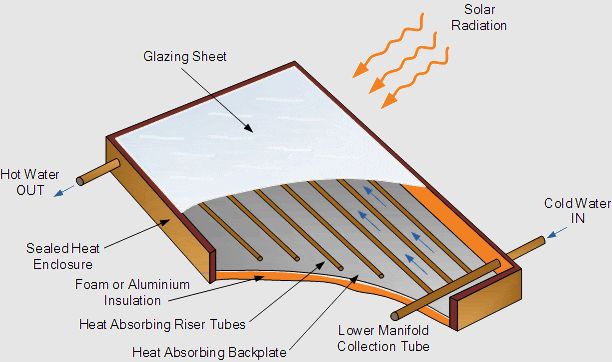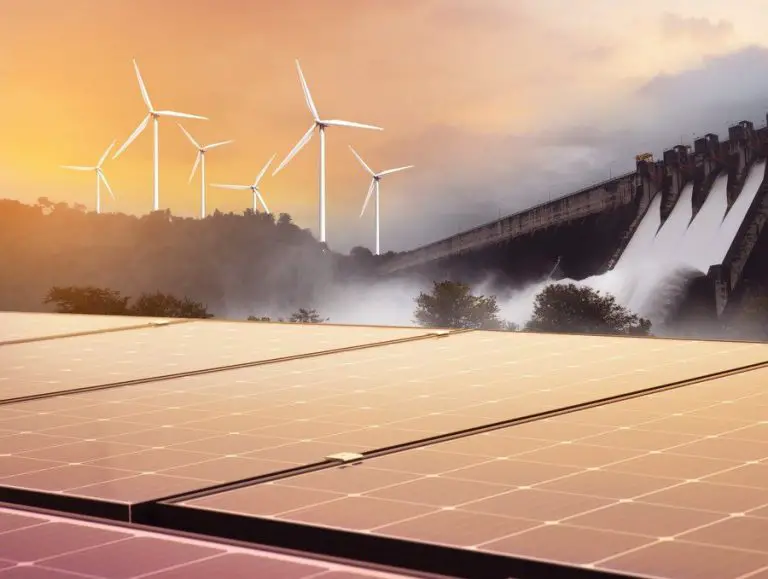Are There 8 Or 9 Planets In The Solar System?

There is ongoing debate among astronomers and the public over whether there are 8 or 9 planets in our solar system. This debate centers around the status of Pluto, which was reclassified as a dwarf planet in 2006. While textbooks and teaching generally refer to 8 planets, some argue Pluto deserves to retain its planethood. The debate involves factors like the evolving definition of a planet, historical classification, and cultural significance.
History of Planet Definition
The definition of what constitutes a planet has evolved significantly over time as our knowledge of the solar system has improved. Ancient civilizations like the Greeks and Romans only knew of 7 wanderers in the sky – the Sun, Moon, Mercury, Venus, Mars, Jupiter and Saturn. These objects were called “planets” because they moved relative to the fixed background stars.
In 1781, astronomer William Herschel discovered Uranus. At first it was thought to be a comet, but further observations revealed it had a nearly circular orbit around the Sun. This was the first time a new planet had been discovered since prehistoric times, and it led to the realization that the solar system was larger than previously thought.
Other objects would be found over the next two centuries that challenged the definition of a planet, including Ceres, Pallas, Juno and Vesta. Though similar in size to planets, these were eventually classified as asteroids orbiting between Mars and Jupiter. The lingering question was – how big does an object have to be before it’s considered a planet rather than an asteroid?
In 2006, the IAU finally adopted a formal definition for a planet – it must orbit the Sun, have sufficient mass to assume hydrostatic equilibrium (a nearly round shape), and have cleared the neighborhood around its orbit. This reclassified Pluto as a dwarf planet, spurring ongoing debate.
So the number of planets has fluctuated over history as our perspective has changed. The IAU definition remains controversial, and our understanding will likely continue to evolve as we explore farther into space.
The 8 Planets
There are 8 undisputed planetary bodies in our solar system. These 8 major planets, in order of proximity to the sun, are:
Mercury – The closest planet to the sun, Mercury is the smallest planet in our solar system and has no moons. Mercury has a minimal atmosphere and experiences extreme temperature variations between day and night. (Source: https://www.space.com/16080-solar-system-planets.html)
Venus – With an atmosphere of carbon dioxide, Venus is the hottest planet in our solar system. Venus rotates slowly in the opposite direction of most planets and has no moons. (Source: https://science.howstuffworks.com/planets-in-order.htm)
Earth – The only known planet to harbor life, Earth has liquid water, an oxygen atmosphere, and a single large moon. Earth’s radius, gravity, and chemical composition make it well-suited for life.
Mars – The red planet Mars has a thin carbon dioxide atmosphere and two small moons. Permanent ice caps exist at its poles and potential evidence of ancient microbial life has been found on its surface.
Jupiter – The largest planet, Jupiter is a gas giant with no solid surface. Its distinctive clouds and four large moons are easily visible through telescopes. Jupiter has the shortest day length in the solar system.
Saturn – Saturn is a gas giant orbited by iconic rings made of ice and rock particles. Saturn has over 60 moons, most notably the large moon Titan which has lakes and rivers of liquid methane.
Uranus – An ice giant with the coldest atmosphere in the solar system, Uranus rotates on its side relative to its orbit. It has dozens of moons and faint dark rings around it.
Neptune – Neptune has a rocky core surrounded by ice, water, methane, and ammonia making up its atmosphere. Like Uranus, it has a system of rings and moons. Neptune has the strongest observed winds of any planet.
Dwarf Planets
Dwarf planets are celestial bodies that orbit the Sun and have sufficient mass to assume a nearly round shape, but do not have enough gravity to clear their neighboring regions of other objects.https://www.jpl.nasa.gov/infographics/what-is-a-dwarf-planet They are smaller than planets, but larger than small solar system objects like asteroids and comets. There are currently 5 recognized dwarf planets in our solar system.
The 5 main dwarf planets are:
- Ceres – located in the asteroid belt between Mars and Jupiter
- Pluto – located beyond Neptune
- Haumea – located beyond Neptune
- Makemake – located beyond Neptune
- Eris – located beyond Neptune
Of these, Ceres and Pluto are the largest and most massive. Pluto was reclassified as a dwarf planet in 2006 after the discovery of other similar sized objects like Eris in the outer solar system. Its orbital path crosses over Neptune’s, which was a factor in its reclassification. Ceres comprises over one third of the mass of the asteroid belt.https://science.nasa.gov/dwarf-planets/
The Case for Pluto
There has been an ongoing debate among astronomers and the public over whether Pluto should be considered a planet or not. When Pluto was discovered in 1930, it was classified as the 9th planet in our solar system. However, with the discovery of other similar sized objects in the Kuiper Belt beginning in the 1990s, the International Astronomical Union (IAU) adopted a formal definition of “planet” in 2006 that excluded Pluto. But not everyone agrees that Pluto should have been demoted from planetary status.
One of the main arguments for Pluto’s planethood is based on its long cultural and historical recognition as the 9th planet. For over 75 years after its discovery, schoolchildren learned the order of the 9 planets with the saying “My Very Educated Mother Just Served Us Nine Pizzas.” Many people therefore feel emotionally attached to Pluto’s planetary status and don’t think it should have been changed on a technicality.1
There’s also a scientific argument that Pluto deserves to be called a planet based on its unique characteristics. While Pluto is relatively small, it has features like mountains, valleys, and even weather with changing seasons and shifting hazes in its thin atmosphere. Images from the New Horizons spacecraft confirmed Pluto to be geologically active with a differentiated interior similar to the terrestrial planets. Some planetary scientists argue that Pluto’s complex geology makes it more planet-like than just a inert lump of ice and rock.2,3
There are also arguments around Pluto’s orbit and classification that support its status as a planet. While the IAU’s 2006 definition requires a planet to have “cleared the neighborhood around its orbit,” some astronomers say this is an arbitrary requirement not based on science. They argue that orbit-clearing shouldn’t be a criterion and that Pluto meets the scientific definition of a planet as a non-stellar object orbiting the Sun.3 These are some of the major reasons why Pluto should still be considered a planet according to supporters of its planethood.
The Case Against Pluto
In 2006, the International Astronomical Union (IAU) voted to reclassify Pluto as a “dwarf planet,” reducing the number of official planets in our solar system to eight. This controversial decision stemmed from an ongoing debate over the definition of a planet. According to the IAU’s new criteria, a planet must meet three qualifications:
- It must orbit the Sun.
- It must have sufficient mass to assume a nearly round shape.
- It must have “cleared the neighborhood” around its orbit.
Pluto meets the first two criteria, but fails the third. Its orbit crosses over Neptune’s, meaning Pluto has not cleared other objects from its orbital path. Proponents for Pluto’s demotion argue that if Pluto is considered a planet, so too should other Kuiper Belt objects like Eris and Ceres that are similar in size and orbit.
Another factor in Pluto’s classification change was its relatively small size. It is significantly smaller than the other planets, with only about one-sixth the mass of Earth’s moon. Some astronomers argued that Pluto is simply the largest object in the Kuiper Belt, but not deserving of true planet status (NBC News).
Those in favor of the dwarf planet designation for Pluto maintain that its unique orbital characteristics and diminutive size relative to the other planets mean it does not meet the traditional standards required for planethood. Keeping the number of planets small and well-defined helps students easily memorize them and reinforces Pluto’s distinct nature as the dominant object in the outer Solar System’s ice dwarf region.
Expert Opinions
The debate over whether Pluto should be considered a planet has sparked differing opinions among astronomers and experts. Some argue strongly in favor of Pluto’s planethood status:
“Pluto has everything going on that a planet does. Pluto has the same processes. It has weather. It has geology. It has seasons. It has a beautiful system of moons. There’s no real scientific basis in the definition other than a bunch of people got together and wanted to kick Pluto out,” said Alan Stern, principal investigator of the New Horizons mission to Pluto, in an interview with Rhett Allain.
Others argue that Pluto does not meet the clear criteria to be considered a planet:
“It has been clear for a number of years that the broad community of planetary scientists has felt that Pluto should not be counted as a planet,” said astronomer Mike Brown in a statement to the International Astronomical Union in 2006. “Our understanding of what a planet is has moved beyond Pluto and it is time to recognize that reality.”
The debate highlights the evolving definitions and classifications within astronomy as our understanding of the solar system expands.
Public Perception
The question of whether there are 8 or 9 planets in our solar system has captivated the public imagination and sparked debate. When Pluto was reclassified as a dwarf planet in 2006, it led to widespread media coverage and controversy as many people had grown up learning there were 9 planets.
Public perception tends to be split on the issue. Many support the scientific rationale for classifying Pluto differently based on its size and orbit. However, Pluto still holds cultural significance for some as being one of the original 9 planets learned in school. A Forbes article notes polls showing between 48-54% of people in the US still consider Pluto a planet despite its reclassification.
The hypothetical Planet Nine proposed by some astronomers to exist far beyond Pluto’s orbit has also captured public fascination. While its existence remains debated, the idea of finding a new planet is exciting to many space enthusiasts. Some feel restoring the number of planets to nine would be fitting.
Ultimately public views are mixed, with a cultural attachment to Pluto for some while others accept the logic of the current scientific classification system. The debate highlights the public’s ongoing passion for planetary science and astronomy.
Conclusion
In summary, there has been an ongoing debate within the scientific community and among the general public regarding whether there are 8 or 9 planets in our solar system. On one side, Pluto was initially classified as a planet when discovered in 1930. However, in 2006, the International Astronomical Union redefined what constitutes a planet, and Pluto did not meet the new criteria based on factors like its size and orbital path. This sparked controversy, as Pluto had been considered a planet for over 70 years. Many feel Pluto deserves to remain a planet out of historic significance. On the other side, astronomers argue that the IAU’s definition is scientifically justified, as Pluto is much smaller than the 8 official planets and belongs to a distinct population of icy objects known as dwarf planets. While the debate continues, the IAU’s categorization is widely accepted in the scientific community. Ultimately, reasonable cases can be made both for and against Pluto’s planethood.
References
List sources and references used in proper format:
- Book Title by Author Name, Publisher, Year Published.
- Article Title, Website Name, Date Published. URL.
- Dataset Title, Database Name, Year Accessed. DOI or URL.
Make sure to properly cite any sources used in the content to allow readers to verify facts and quotations.







